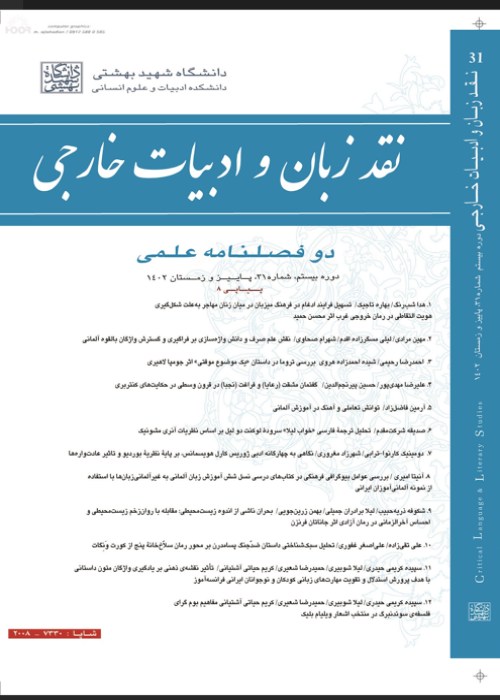Transculturation, Ideology, and Double Consciousness in LeRoi Jones’s (Amiri Baraka’s) The Great Goodness of Life: A Coon Show and The Slave Ship
This article attempts to analyze the concepts of transculturation, ideology and double consciousness in Amiri Baraka’s ideological plays; The Great Goodness of Life: A Coon Show (1969) and The Slave Ship (1967). In order to get this objective, Frantz Fanon’s concepts of transculturation and the identity in regards to the symptom of double consciousness, as well as the ideas of Slavoj Zizek in analyzing the psycho-ideological impacts have been utilized. The blacks were defined as the ‘Others’, and the dreams of ‘Becoming’ have never been easily applicable for them. They become separated from their homeland, and labored in the new world of Western multinational capitalism among the forms of colonization. The plays of Amiri Baraka focus on the revolutionary work of art. This study concentrates on Baraka's attempts toward his black plays as the notion of critical response to the dominated ideology which stands against the black community. Background of the Studies: This study is an attempt to consider ethno-psycho-ideological key concepts while reading Baraka’s plays. Amiri Baraka formerly known as LeRoi Jones (1934 – 2014) is a black American poet, activist, scholar and playwright. Throughout most of his career, he supported and assisted in re-establishing of the influential Black Arts movement which sought to move black writers away from western aesthetic sensibilities toward a more complete embrace of the black world. Baraka is known for his aggressive style and his controversial writing. He has penned more than 50 books, including fiction, music criticism, essays, short stories, poetry and plays in order to explore and examine Black life, love, and social order. Materials and
This research will be an interdisciplinary discourse, fascinated with the spectacle of the racism, as the images of the colonial and black ‘Others’ which become a trope of desire for the hybrid identities. The discussions will take place in the realm of transculturalism and hybridity, as well as the identities which evoke the challengeable racial and ideological experiences in Fanon’s thought. Being the ‘Other’ and having double consciousness are under the invitation of the black subject to mimic white culture in order to obtain political and social comformity. Zizek’s opening discussion in his The Sublime Object of Ideology is to claim that today ideology has delved in the political landscape. He insists, Althusser’s understanding of ideological identification suggests that an individual is wholly interpellated into a place within a political system by the system’s dominant ideology and ideological state apparatuses. His ideas are formed by drawing on Lacanian psychoanalysis, around the ideological dis-identification and jouissance as political factors.
The third play of Four Black Revolutionary Plays is Great Goodness of Life: A Coon Show (1969) which employed the combinatory techniques and styles of expression, and subtitled as A Coon Show to demonstrate that the play parodies the nineteenth-century American black minstrel show which was created by whites to satirize, exaggerate, and to ridicule black life-styles through the use of myth. The black protagonist, Court Royal is accused by an electronic voice, of shielding a wanted criminal. It is black man’s gullibility that Baraka seems to resent the most. Slave Ship (1967) is a historical pageant consists of projected images, different styles of black dance and chant, plus pause and silence. The setting of the play is a slave ship, the cries of enslaved women and men, and white sailors laughing while calculating the number of slaves. Inscribed in the play is the nationalist revolution Baraka envisions, in order to transform realities of bondage, cultural defamation, and racial prejudice.
Both plays of Amiri Baraka, in this study, are the revolutionary work of art. His plays indicate the centrality of a black massive movement toward the achievement of complete self-rule and self-realization. His experimental works in the 1960s are considered as the most significant African-American ones. Baraka’s powerful revolutionary art and political actions were directed entirely to the black and white audiences.
- حق عضویت دریافتی صرف حمایت از نشریات عضو و نگهداری، تکمیل و توسعه مگیران میشود.
- پرداخت حق اشتراک و دانلود مقالات اجازه بازنشر آن در سایر رسانههای چاپی و دیجیتال را به کاربر نمیدهد.


